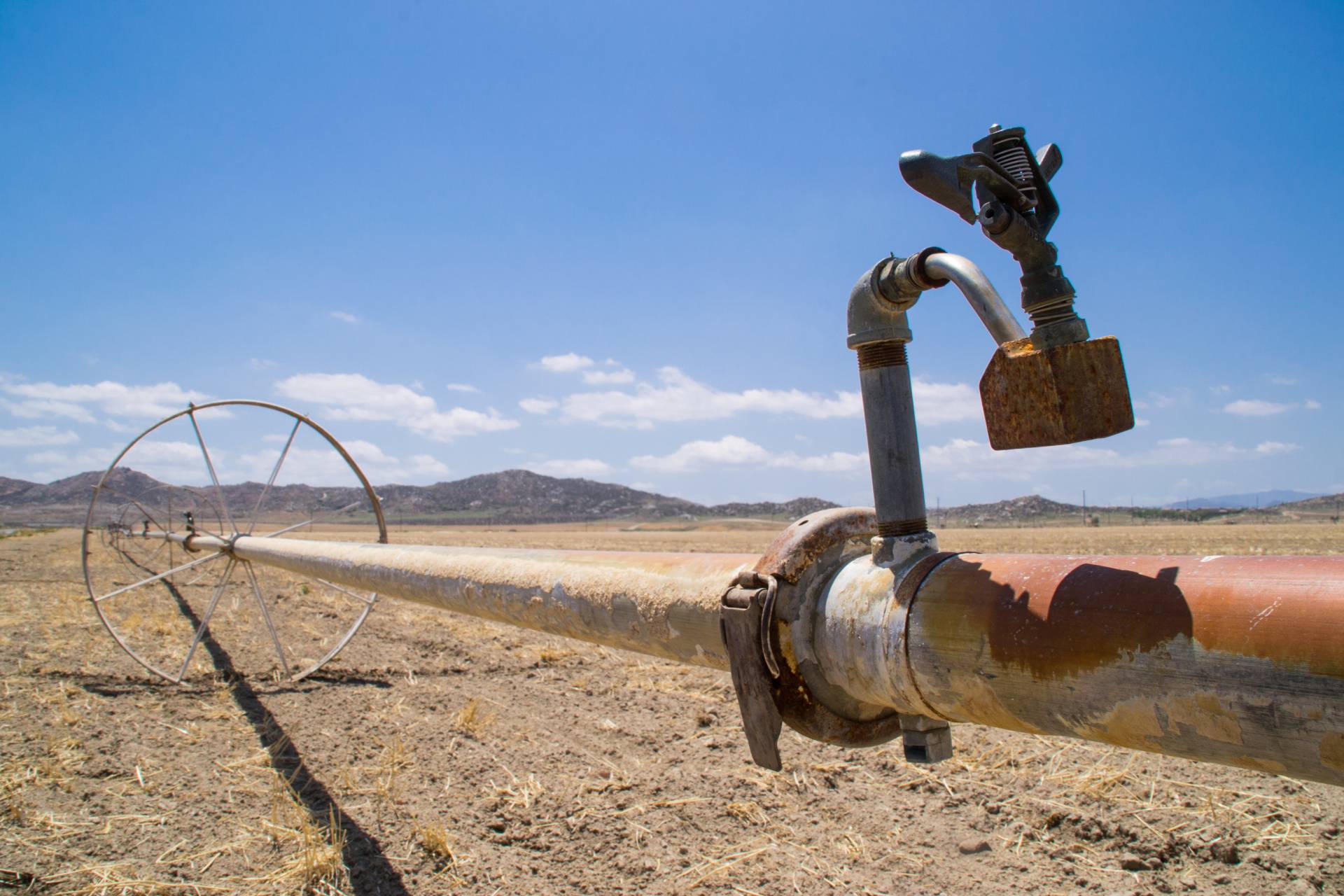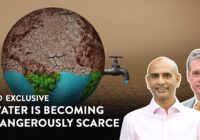The Golden State stands at a crossroads. Despite passing the ambitious Sustainable Groundwater Management Act of 2014, California today faces a water crisis that oscillates between severe droughts and devastating floods. It will take more than a temporary change in the weather to solve the alarming trends in groundwater depletion.
Groundwater, in drought years, can comprise up to 60% of California’s water supply. Cutting demand on this limited resource through water rationing efforts can only go so far. We must now focus on the supply side. Recent legislative measures like the California Water Supply Solutions Act of 2023 and the inclusion of aquifers as natural infrastructure in Senate Bill 122 signal a recognition of the worsening situation. Yet, they are only pieces of a much larger puzzle.
Managing California’s natural resources means tapping into its human resources
Making California’s water future sustainable has hit roadblocks. Not enough people are getting involved, and we are not leveraging technology effectively.
Take the California Natural Resources Agency’s (CNRA) Open Data website as an example. It’s filled with over 2,100 data sets of important water information, but hardly anyone uses it. Out of California’s 39 million residents, only a tiny fraction, about 0.1%, check out the site each month. These are usually experts like hydrologists and academics, not the general public. What’s more, the CNRA barely has any followers online — the topic “water” has just two on the CNRA’s own website, and although the agency is a bit more popular on Twitter with 5,800 followers, that’s nothing compared to the 492,600 followers that CalFire, California’s firefighting agency, has. This shows a big disconnect between the wealth of information available and the level of public engagement, and between the urgent versus the unstoppable.
The conclusion is inescapable. We must tap into the untapped: the collective strength of an innovative, inclusive and more accelerated approach to water management that unlocks the power of community action and technological innovation.
A simple first step would be to digitize all water data. Through the use of AI and natural language processing, it should be easy to query from your smartphone and know your local waterscape in real time. It should be as easy to ask a question about water conservation on the CNRA website as it is to ask ChatGPT how to bake a soufflé. Water districts, much like school districts, have high variability and while the cause may be global, the information has to be local to have personal relevance.
For this to be useful in starting conversation, one has to know what is the source of one’s water; its sustainability, whether growing or shrinking, including recharge and discharge rates; how much different classes of customers in one’s community use it; what the consumption patterns are; what delivery leaks through one’s infrastructure there are; what restrictions apply to one at any given point in time; what the quality is; what the age of the infrastructure and planned improvements and their capital costs are; how much water costs; what it is predicted to cost in the future.
To achieve this, the state should direct the California Department of Technology’s Artificial Intelligence Technology group to create a special task force to track the mushrooming number of companies globally that are bringing AI-driven solutions to every aspect of water management. This is a takeaway from the Dutch example, AI4WQ AI for Water Quality initiative.
Every connected citizen, armed with this knowledge and technology in real-time, can then act more responsibly and also become an advocate for solutions that actively contribute to the health and sustainability of their local water systems.
But to truly make a difference, our approach must extend beyond individuals. The state should require local water agencies to establish neighborhood social media groups, inspired by the US Justice Department’s Neighborhood Watch program but with a focus on water.
To facilitate this, the state could develop a “My Water Manual,” providing a clear blueprint for forming these community groups. This manual would encourage partnerships between the community and local water agencies, aimed at tackling local water issues and corrective actions thereof. Corporations would be tasked equally as citizens because their corporate social responsibility now needs to incorporate water accountability.
Such groups would act as modern guardians of our water, akin to larger watershed and river conservation organizations. By making water stewardship a collective community mission, we can leverage civil society as a force for united, impactful action. As an example, Xylem has initiated a version of this with New York, Manchester and Mumbai.
Leveraging new technologies to manage water more effectively
This recommendation of empowering the people to be stewards of water gains an edge with extending Professor Jay Famiglietti‘s pioneering work on the use of satellites for water monitoring. Going forward, his suggestion is to consider using nanosatellites. Unlike the occasional insights from helicopters or drones, these cost-effective, mini-satellites can provide continuous, comprehensive observations on groundwater levels, detecting both replenishment and depletion, as well as monitoring land subsidence. They can be crucial for evaluating the effectiveness of water conservation measures like spreading grounds and injection wells.
Californians could significantly enhance their Managed Aquifer Recharge efforts with this technology. This will be the only viable technology that will function in the event of a prolonged extreme weather phenomena. Bruno Aragon et al demonstrated the proof that this technology works with their research study of fields in Nebraska.
The actionable step is for the state to place a proof-of-concept order for these micro satellites’ data, making it accessible to every local water agency and community. This revolutionary approach promises improved local water management in California along with state supervision. It will also make the financial aspects of water usage and conservation more transparent and efficient.
Professor Upmanu Lall, an authority on climate and water, has pointed out America’s urgent need to replace aging water infrastructure, such as dams and pipes, now at high risk of failing. The staggering costs make a complete overhaul impractical. During my interview with him, one proposed solution? Turn to decentralized water purification systems installed directly at the point of use. These systems are increasingly affordable and can avert disasters like that of Flint, Michigan, by providing clean, safe drinking water. This approach sidesteps the expense and complexity of massive infrastructure upgrades. Again, it showcases how technology is inexorably driving us to consider new, community-centric alternatives to obsolete, centralized, legacy water systems.
To effect this, we must leverage partnerships between the government and private sector. Such collaborations are key to injecting much-needed financial capital into local water projects, allowing us to catch up on delayed efforts. While the state has initiated larger-scale projects with private partners, it’s equally crucial to establish straightforward regulations that enable smaller initiatives to launch without excessive bureaucracy.
The Integrated Regional Water Planning Management Act encourages local entities to create regional management groups through grants. This initiative needs to be driven deeper at the micro-local level. Simplifying and multiplying this investment process will hasten the introduction of innovative, clean water technologies tailored to the specific desires and necessities of local communities. By involving everyone in this journey, one ensures widespread commitment and support. Ultimately, the decisions made will mirror the unique needs, cultural values and perhaps even the spiritual considerations of each community, ensuring solutions are as diverse and nuanced as the people they serve.
Taking these steps forward, the state can become a driving force in nurturing water technology startups. In some cases, it can even encourage tech giants from Silicon Valley to contribute their expertise for free. Their reward? Perfecting their innovations in California opens the door to markets beyond, fueling job creation and economic growth. A dramatic example is Google’s flood forecasting service, first launched in India, which helps save lives and property by predicting floods in advance. It has now been rolled out in over 60 countries!
California grows if its water grows. Californians can change how they view their own water — not as something one simply uses, but something that good neighbors must care for and preserve. This kinship approach not only champions technological innovation but will also integrate a culture of water stewardship and sponsorship across California’s diverse communities, making every citizen a proactive participant in safeguarding their water future. IBM’s Dr. Juan Bernabe-Moreno earth science work, in partnership with NASA, has been characterized as the democratization of weather and climate — putting weather and climate accountability of the government in the hands of the community. This is the future.
Nothing prevents us from starting pilot programs for each of these recommendations immediately. Time is of the essence here.
[Anton Schauble edited this piece.]
The views expressed in this article are the author’s own and do not necessarily reflect Fair Observer’s editorial policy.
Support Fair Observer
We rely on your support for our independence, diversity and quality.
For more than 10 years, Fair Observer has been free, fair and independent. No billionaire owns us, no advertisers control us. We are a reader-supported nonprofit. Unlike many other publications, we keep our content free for readers regardless of where they live or whether they can afford to pay. We have no paywalls and no ads.
In the post-truth era of fake news, echo chambers and filter bubbles, we publish a plurality of perspectives from around the world. Anyone can publish with us, but everyone goes through a rigorous editorial process. So, you get fact-checked, well-reasoned content instead of noise.
We publish 2,500+ voices from 90+ countries. We also conduct education and training programs
on subjects ranging from digital media and journalism to writing and critical thinking. This
doesn’t come cheap. Servers, editors, trainers and web developers cost
money.
Please consider supporting us on a regular basis as a recurring donor or a
sustaining member.
Will you support FO’s journalism?
We rely on your support for our independence, diversity and quality.









Comment